الحار منتجات
ملكنا الإخبارية
iron ore process from the blast furance

Extraction of Iron Metallurgy Blast Furnace and
This concentrated ore is mixed with limestone (CaCO 3) and Coke and fed into the blast furnace from the top. It is in the blast furnace that
获取价格
Blast furnace Definition, Temperature, Diagrams, Facts
2024/7/18 Blast furnaces produce pig iron from iron ore by the reducing action of carbon (supplied as coke) at a high temperature in the
获取价格
Production of Iron in the Blast Furnace SpringerLink
2020/8/19 The blast furnace gas (BFG) generated in the process has the volumetric composition indicated as follows: 25% CO, 20% CO 2, and 55% N 2. Calculate per ton of
获取价格
Blast Furnace Extraction of Iron - YouTube
标记:Iron OreIron From Blast FurnaceReactions in Blast FurnaceExtraction of Iron
Blast Furnace Ironmaking - an overview ScienceDirect Topics
2020/7/15 The ironmaking blast furnace (BF) is a very energy-intensive metallurgical process and the prime route for steel production, from which about 70% of the world’s
获取价格
Blast Furnace Ironmaking SpringerLink
2023/10/6 The smelting process of blast furnace is carried out in the shaft furnace of a closed countercurrent reactor and heat exchanger. The complex physical changes
获取价格
Iron Ore Reactions and Phenomena in a Blast Furnace
2022/6/15 Dear Colleagues, Blast furnaces (BF) are still the dominant process for making iron in the world. Blast furnaces are charged with iron ores in the form of pellets, sinter and/or lump ore and
获取价格
Blast Furnace Process - an overview ScienceDirect Topics
Blast Furnace Slag (BFS) is a by-product of the reduction stage, in which iron ore is converted into pig iron. About 300 kg of BFS is produced per ton of pig iron [16] . During
获取价格
Blast Furnace Process SpringerLink
2020/3/3 Temperature profile in a blast furnace (iron ore starts melting at 1100–1150 ℃ and slag become fully liquid at 1350–1400 ℃) ... In the blast furnace process, iron
获取价格
Blast Furnace Ironmaking - an overview ScienceDirect Topics
2020/7/15 Blast furnace uses iron ore as the iron-bearing raw materials, and coke and pulverized coal as reducing agents and heat source, lime, or limestone as the fluxing agents. The main objective of blast furnace ironmaking is to produce hot metal with consistent quality for BOF steelmaking process.
获取价格
Ironmaking 101 – From Ore to Iron with Blast Furnaces
2017/10/10 In the upper region of the blast furnace where temperature range from 600 to 700 C. the iron ore or iron oxide is reacts with the gaseous CO reductant to produce iron: Fe 2 O 3 (s) + 3CO(g)
获取价格
Iron processing Definition, History, Steps, Uses, Facts
Iron processing, use of a smelting process to turn the ore into a form from which products can be fashioned. Included in this article also is a discussion of the mining of iron and of its preparation for smelting. ... The product of
获取价格
Production of Iron in the Blast Furnace SpringerLink
2020/8/19 The reduction of iron ore in the blast furnace mainly consists in the liberation of the oxygen associated with the metals and the combination of this oxygen with carbon. ... The volume of blast furnace gas produced in the process. The quantity of air-blast (W) that is injected through the tuyeres of the furnace. Data: Use the following
获取价格
Blast furnace process - tec-science
2018/6/21 In the blast furnace, the iron ore reacts with the carbon contained in the coke to form grey or white pig iron. Combustion process. The iron in the processed ores must be dissolved out by chemical processes. This requires an element that binds oxygen more strongly than iron.
获取价格
Blast Furnace - an overview ScienceDirect Topics
Blast furnace gas is produced during the iron oxide reduction in blast furnace iron making in which iron ore, coke and limestone are heated and melted in a blast furnace and is an indigenous process gas of the steelworks industry (Pugh et al., 2013).
获取价格
Blast Furnace Ironmaking SpringerLink
2023/10/6 The smelting process of blast furnace is carried out in the shaft furnace of a closed countercurrent reactor and heat exchanger. The complex physical changes and chemical reactions are completed in the process of the countercurrent movement of the charge and gas in which the raw materials containing iron oxide (sinter, pellets, etc.),
获取价格
Blast Furnace Process - an overview ScienceDirect Topics
Blast Furnace Slag (BFS) is a by-product of the reduction stage, in which iron ore is converted into pig iron. About 300 kg of BFS is produced per ton of pig iron [16] . During the blast furnace process , limestone (CaCO 3 ) is added to removing impurities: silica (SiO 2 ), phosphorus pentoxide (P 2 O 5 ), calcium sulfide (CaS), magnesium oxide ...
获取价格
23.3: Metallurgy of Iron and Steel - Chemistry LibreTexts
2023/7/12 Originally, the iron was collected in pools called pigs, which is the origin of the name pig iron. Figure \(\PageIndex{1}\): A Blast Furnace for Converting Iron Oxides to Iron Metal. (a) The furnace is charged with alternating layers of iron ore (largely Fe 2 O 3) and a mixture of coke (C) and limestone (CaCO 3). Blasting hot air into the ...
获取价格
Extraction of Iron from Hematite Cambridge O Level Chemistry
Iron is extracted in a large container called a blast furnace from its ore, hematite Modern blast furnaces produce approximately 10,000 tonnes of iron per day The process is demonstrated and explained below: Diagram showing the carbon extraction of iron. The raw materials: iron ore (hematite), coke (an impure form of carbon), and limestone are ...
获取价格
Blast Furnace - an overview ScienceDirect Topics
The blast furnace process can be briefly described as follows. Iron oxides, flux agents, and metallurgical coke are added to a skip car at the stock house. ... BFG is a by-product of the chemical reduction of iron ore in blast furnaces. It typically contains about 20–30% carbon monoxide (CO) and about 2–6% hydrogen (H 2) as combustible ...
获取价格
Direct reduced iron process - tec-science
2018/6/21 In contrast to the blast furnace process, the direct-reduced iron process operates at temperatures of up to 1000 °C. The iron ores are therefore not melted! This also applies to the gangue contained in the ore, which is why the iron ores used must be relatively low in gangue from the outset.
获取价格
Blast Furnace Process SpringerLink
2020/3/3 Temperature profile in a blast furnace (iron ore starts melting at 1100–1150 ℃ and slag become fully liquid at 1350–1400 ℃) ... In the blast furnace process, iron-bearing materials (e.g. lumps iron ore, sinter/pellets, mill scale and steelmaking slag), coke (fuel as well as reducer) and flux (limestone and/or dolomite) are
获取价格
What is steel and how is steel made? - eurofer
2020/3/17 Blast furnaces produce iron from iron ore. In a second step a basic oxygen converter turns iron, with some additions of scrap, into steel. Electric Arc Furnaces produce steel mostly from scrap collected for recycling. Blast Furnace Route . Large European blast furnaces can produce around four million tonnes of iron per year. They
获取价格
Blast Furnace - an overview ScienceDirect Topics
The blast furnace process can be briefly described as follows. Iron oxides, flux agents, and metallurgical coke are added to a skip car at the stock house. ... BFG is a by-product of the chemical reduction of iron ore in blast furnaces. It typically contains about 20–30% carbon monoxide (CO) and about 2–6% hydrogen (H 2) as combustible ...
获取价格
Direct reduced iron process - tec-science
2018/6/21 In contrast to the blast furnace process, the direct-reduced iron process operates at temperatures of up to 1000 °C. The iron ores are therefore not melted! This also applies to the gangue contained
获取价格
Blast Furnace Process SpringerLink
2020/3/3 Temperature profile in a blast furnace (iron ore starts melting at 1100–1150 ℃ and slag become fully liquid at 1350–1400 ℃) ... In the blast furnace process, iron-bearing materials (e.g. lumps iron ore, sinter/pellets, mill scale and steelmaking slag), coke (fuel as well as reducer) and flux (limestone and/or dolomite) are
获取价格
What is steel and how is steel made? - eurofer
2020/3/17 Blast furnaces produce iron from iron ore. In a second step a basic oxygen converter turns iron, with some additions of scrap, into steel. Electric Arc Furnaces produce steel mostly from scrap collected for recycling. Blast Furnace Route . Large European blast furnaces can produce around four million tonnes of iron per year. They
获取价格
Blast Furnace - OSRS Wiki
On Blast Furnace themed worlds, there is an additional fee of 72,000 coins to use the Blast Furnace per hour; you don't need to pay all at once, as the fee is time based (12 coins per tick). 111-140 Coins can be deposited in the coffer with run on for maximum efficiency.Coins can be deposited in the coffer near the bank chest to pay the fee. On all other worlds,
获取价格
Basic Oxygen Furnace Steelmaking - Steel Technology
Blast furnace-basic oxygen furnace uses iron ore as its base raw material that accounts over just 50% of BOF steel costs, and electric arc furnace uses scrap as its base that represents around 75% of EAF steel cost. The Basic Oxygen Steelmaking process differs from the EAF is that BOF is self-sufficient in energy.
获取价格
The Blast Furnace: A Vital Tool in Climate Neutral Ore-Based ...
2023/6/4 The blast furnace process is particularly suitable to play a part in the energy transition of production of steel starting from iron ore. It promises to be the ‘melting pot’ and a ‘vital vehicle’ for absorbing energy transition levers on existing primary steelmaking capacity. ... Further synergy with upstream—iron ore resource quality ...
获取价格
Sintering: A Step Between Mining Iron Ore and Steelmaking
2019/6/11 World resources are estimated to be greater than 800 billion tons of crude ore containing more than 230 billion tons of iron. The only source of primary iron is iron ore, but before all that iron ore can be turned into steel, it must go through the sintering process. Sinter is the primary feed material for making iron and steel in a blast furnace.
获取价格
Novel adaptation for existing blast furnaces could reduce
2023/1/24 Most of the world’s steel is produced via blast furnaces which produce iron from iron ore and basic oxygen furnaces which turn that iron into steel. The process is inherently carbon intensive, using metallurgical coke produced by destructive distillation of coal in a coke oven, which reacts with the oxygen in the hot air blast to produce ...
获取价格
How we make steel - British Steel
In addition, coke is transferred directly to the blast furnaces where it is used as a fuel in the ironmaking process. Making iron. In Scunthorpe we have four blast furnaces named after four English queens – Mary, Bess, Anne and Victoria. Coke, iron ore, sinter and limestone are fed – or charged – into the top of the furnaces. A hot air ...
获取价格
Lesson Explainer: Extracting Iron Nagwa
The sintering process ensures that the iron ore, limestone, and coke materials are mixed evenly. ... In a blast furnace, the iron ore is reduced to iron by carbon monoxide, which also eliminates answer C. As previously stated, limestone is a form of calcium carbonate and does not contain iron. Upon decomposition, the oxygen that limestone ...
获取价格
Smelting iron bars at Blast Furnace - OSRS Wiki
Going to Keldagrim for the first time. Although level 15 Smithing is required to smith iron bars, level 60 is strongly recommended so that you don't have to pay an entrance fee to the Blast Furnace.It provides a great opportunity for players to reap great profits by producing a large volume of iron bars (worth 226 each), which are used by low-to-mid level smiths.
获取价格
Iron processing - Ores, Smelting, Refining Britannica
Iron processing - Ores, Smelting, Refining: Iron ores occur in igneous, metamorphic (transformed), or sedimentary rocks in a variety of geologic environments. Most are sedimentary, but many have been changed by weathering, and so their precise origin is difficult to determine. The most widely distributed iron-bearing minerals are oxides, and
获取价格
What is a blast furnace? What is an electric arc furnace? ITV News
2024/1/19 In order to make steel using a blast furnace, first iron needs to be produced. Steelworkers do this by adding iron ore, coke and limestone into the furnace. Coke is a coal-based fuel which is ...
获取价格الحجر المدى محطم سعر ماليزيا
تفسير حلم تفجير طحونة في الفم
كسارة الحجر للبلدان النامية
طاحونة الرطب جدا هيدراباد
الأسطوانة طحن نوع zgm13n
الاستفادة من سحق الفحم
أشرطة الفيديو التجمع مطحنة خام الحديد طحن
التأمين على دوائر طحن التعدين
كسارة الحجر تقرير المشروع 2 الصخور كسارة
ماليزيا نظام طحن الرماد المتطاير
محلات بيع معدات الشوي
ماليزيا هارتل محطم
سعر المصنع كسارة مخروطية 100tph puzzolana
آلات غسل الرمال للتعدين على نطاق صغير في غانا
machines crushing plants europ
شركات تصنيع مصانع الاسمنت
إنشاء معمل تكسير الحجارة
کارخانه ماشین آلات سنگین شانگهای
وحدة الكلنكر طحن
أوسبورن الفك
3 رطل مطحنة الكرة الفولاذية
كسارة الصخور الكهربائية المتنقلة
مطحنة الكرة الشعبي التعدين مطحنة الصين البوكسيت
كسارة مخروطية محطم
خط إنتاج معالجة خام الحديد اليمني
كسارات الحجر الجيري والدولوميت الموردين
حول لدينا
تأسست شركة Henan Lrate للعلوم والتكنولوجيا المحدودة التي تصنع معدات التكسير والطحن الكبيرة والمتوسطة الحجم في عام 1987. وهي شركة مساهمة حديثة مع البحث والتصنيع والمبيعات معًا.
على مدار أكثر من 30 عامًا ، تلتزم شركتنا بنظام الإدارة العلمية الحديث والتصنيع الدقيق والريادة والابتكار. الآن أصبحت LIMING رائدة في صناعة تصنيع الآلات المحلية والخارجية.



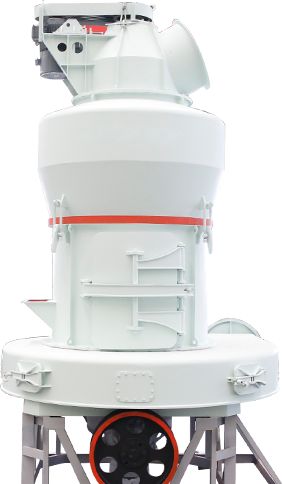
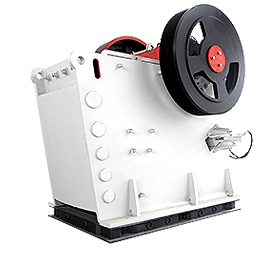
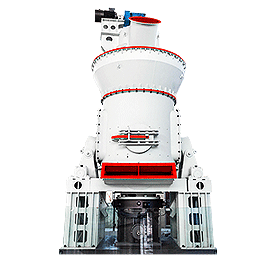
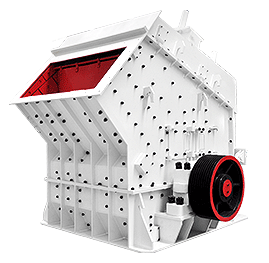
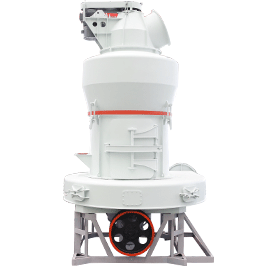
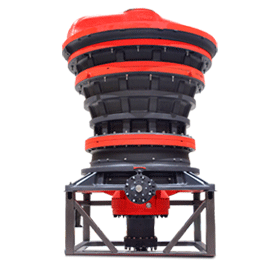
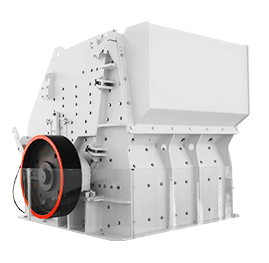
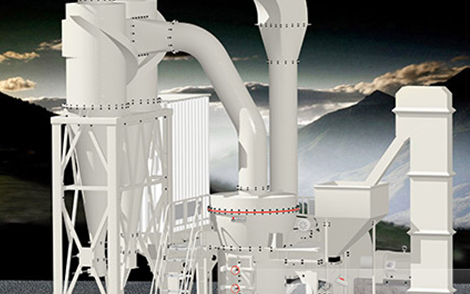
 2021/07/20
2021/07/20